-
 Bitcoin
Bitcoin $117500
2.15% -
 Ethereum
Ethereum $3911
6.19% -
 XRP
XRP $3.316
10.79% -
 Tether USDt
Tether USDt $1.000
0.01% -
 BNB
BNB $787.2
2.24% -
 Solana
Solana $175.2
4.15% -
 USDC
USDC $0.9999
0.00% -
 Dogecoin
Dogecoin $0.2225
8.40% -
 TRON
TRON $0.3383
0.28% -
 Cardano
Cardano $0.7868
6.02% -
 Stellar
Stellar $0.4382
9.34% -
 Hyperliquid
Hyperliquid $40.92
7.56% -
 Sui
Sui $3.764
7.63% -
 Chainlink
Chainlink $18.48
10.66% -
 Bitcoin Cash
Bitcoin Cash $582.1
1.88% -
 Hedera
Hedera $0.2601
6.30% -
 Avalanche
Avalanche $23.33
4.94% -
 Ethena USDe
Ethena USDe $1.001
0.02% -
 Litecoin
Litecoin $122.3
2.04% -
 UNUS SED LEO
UNUS SED LEO $8.969
-0.27% -
 Toncoin
Toncoin $3.339
0.86% -
 Shiba Inu
Shiba Inu $0.00001287
4.30% -
 Uniswap
Uniswap $10.43
7.38% -
 Polkadot
Polkadot $3.861
5.08% -
 Dai
Dai $1.000
0.02% -
 Bitget Token
Bitget Token $4.513
3.41% -
 Monero
Monero $267.7
-6.18% -
 Cronos
Cronos $0.1499
4.14% -
 Pepe
Pepe $0.00001110
5.15% -
 Aave
Aave $284.9
8.28%
How to stake Cardano in Yoroi Wallet
Stake your ADA in Yoroi Wallet to earn rewards without locking funds—delegation is simple, secure, and lets you support the Cardano network effortlessly.
Aug 08, 2025 at 10:52 am
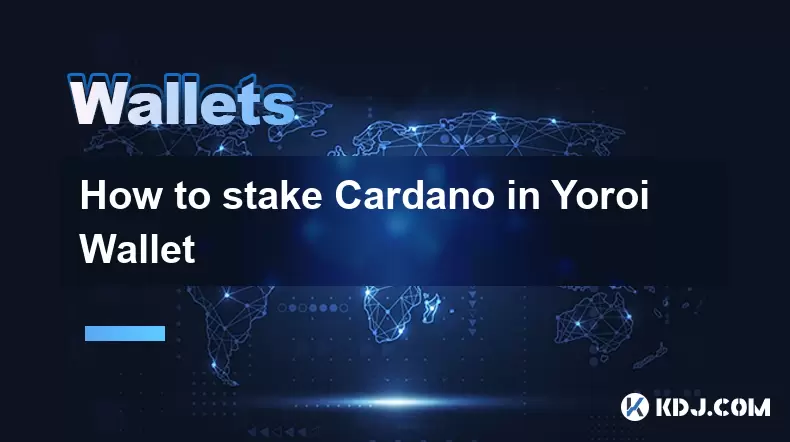
Understanding Cardano Staking and Yoroi Wallet
Staking Cardano (ADA) allows holders to participate in the network’s proof-of-stake consensus mechanism by delegating their ADA to a stake pool. This process helps secure the blockchain and rewards participants with additional ADA over time. The Yoroi Wallet is a lightweight, browser extension, and mobile wallet developed by EMURGO that supports Cardano staking directly from the user interface. Unlike full-node wallets, Yoroi doesn’t require downloading the entire blockchain, making it ideal for users who value speed and simplicity.
The wallet supports both Chrome and Firefox as browser extensions and is also available on iOS and Android. One of its key features is seamless integration with the Cardano network, enabling users to send, receive, and stake ADA without compromising security. Importantly, staking in Yoroi does not lock up funds — users retain full access to their ADA at all times, and can transfer or delegate them as needed.
Setting Up Yoroi Wallet
Before staking ADA, users must first install and configure the Yoroi Wallet. The setup process varies slightly depending on the platform but follows the same core principles.
- Visit the official Yoroi website and download the browser extension for Chrome or Firefox.
- Click “Add to Chrome” or “Add to Firefox” and confirm the installation.
- Once installed, click on the Yoroi icon in the browser toolbar to launch the wallet.
- Choose “Create a New Wallet” if starting from scratch.
- Enter a wallet name and a strong password.
- Carefully write down the 15-word recovery phrase and store it in a secure location. This phrase is essential for wallet recovery.
- Confirm the recovery phrase by selecting the words in the correct order.
- Complete setup and view the wallet dashboard.
For mobile users, the Yoroi Mobile app can be downloaded from the App Store or Google Play. The setup steps are nearly identical, requiring a wallet name, password, and secure storage of the recovery phrase.
Transferring ADA to Yoroi Wallet
To begin staking, users must have ADA in their Yoroi wallet. If ADA is held on an exchange or in another wallet, it must be transferred.
- Open the Yoroi wallet and click on the “Receive” button.
- A pop-up will display a public receiving address — a long string of alphanumeric characters starting with “addr1”.
- Copy this address carefully or scan the QR code if using a mobile device.
- Log in to the source wallet or exchange where the ADA is currently stored.
- Initiate a withdrawal and paste the Yoroi address into the recipient field.
- Confirm the transaction and wait for network confirmation. Cardano transactions typically settle within 1–5 minutes.
Once the ADA appears in the Yoroi balance, staking can proceed. It is recommended to keep a small amount of ADA aside for transaction fees, which are usually less than 0.2 ADA.
Selecting a Stake Pool for Delegation
Staking in Yoroi involves delegating ADA to a stake pool, which is a node operator that participates in block production. Users do not run a node themselves but earn rewards based on the pool’s performance and the amount of ADA delegated.
When choosing a stake pool, consider the following factors:
- Saturation level: Pools that are near or above 100% saturation offer lower returns due to Cardano’s incentive design. Look for pools below saturation to maximize rewards.
- Pledge amount: A higher operator pledge indicates commitment and can improve reliability.
- Fee structure: Each pool charges a margin fee and a fixed cost per epoch. Compare these to estimate net rewards.
- Uptime and performance: High-performing pools with consistent block minting generate better rewards.
- Geographic location and decentralization: Supporting smaller or geographically diverse pools promotes network health.
Yoroi provides a built-in stake pool browser that displays key metrics. Users can sort pools by ROI, saturation, and reliability. Clicking on a pool reveals detailed statistics, including live stake, blocks produced, and current fees.
Delegating ADA in Yoroi Wallet
Once a suitable stake pool is selected, delegation can be completed in a few simple steps.
- Open the Yoroi wallet and ensure the correct network (Cardano Mainnet) is active.
- Click on the “Delegation Center” tab located in the main menu.
- Browse or search for the desired stake pool using the search bar or filters.
- Click on the pool to view its details and confirm it aligns with your preferences.
- Select “Delegate” to begin the process.
- Yoroi will prompt a confirmation screen showing the pool name, fees, and estimated rewards.
- Confirm the delegation using your wallet password.
- A small transaction fee (in ADA) will be deducted to register the delegation on-chain.
- Wait for the transaction to be confirmed — usually within a few minutes.
- After confirmation, the wallet will display the selected pool under the “Staking” section.
It’s important to note that rewards do not begin immediately. The first rewards are typically distributed after 15 to 20 days, as Cardano operates in epochs (each lasting 5 days), and there is a delay between delegation and reward issuance.
Monitoring Staking Rewards and Status
After delegation, users can monitor their staking status and accumulated rewards directly in Yoroi.
- The dashboard displays the current delegated stake pool.
- A “Rewards” section shows the total ADA earned over time.
- Rewards are automatically compounded — they are added to the staked balance and contribute to future rewards.
- Users can view upcoming reward estimates based on current pool performance.
- The wallet also shows the current epoch and countdown to the next reward cycle.
If a user decides to change pools, they can re-delegate at any time. The process is the same as the initial delegation and does not affect accumulated rewards. Previous rewards remain intact and continue to compound under the new delegation.
Frequently Asked Questions
Can I spend my ADA while it’s staked in Yoroi?
Yes, staking in Yoroi does not lock your funds. You can send, receive, or transfer ADA at any time. Even if you move all your ADA out of the wallet, any earned rewards up to that point remain yours.
Do I need to pay to delegate or re-delegate?
Yes, each delegation or re-delegation requires a small transaction fee in ADA, typically around 0.17–0.20 ADA. This fee covers the on-chain registration cost and is paid only once per delegation action.
How often are staking rewards distributed?
Rewards are calculated at the end of each epoch (every 5 days), but they are not instantly available. There is a 3-epoch delay — meaning rewards from delegation start appearing after approximately 15–20 days.
Is Yoroi Wallet safe for staking?
Yoroi is considered secure because it is a non-custodial wallet — only you control your private keys. The recovery phrase gives full access to funds, so it must be kept private. The wallet uses end-to-end encryption and does not store user data on remote servers.
Disclaimer:info@kdj.com
The information provided is not trading advice. kdj.com does not assume any responsibility for any investments made based on the information provided in this article. Cryptocurrencies are highly volatile and it is highly recommended that you invest with caution after thorough research!
If you believe that the content used on this website infringes your copyright, please contact us immediately (info@kdj.com) and we will delete it promptly.
- Stablecoins, Hong Kong, and On-Chain Finance: Navigating the Regulatory Maze
- 2025-08-08 12:30:12
- Tron's Sell-Off Spurs Altcoin Shift: What's Next for TRX?
- 2025-08-08 08:30:12
- Euler, DeFi, and Coinbase: A New York Minute on the Latest Buzz
- 2025-08-08 12:30:12
- RUVI Presale: Is the Growth Potential Real?
- 2025-08-08 09:10:12
- Sleep Token's US Takeover: Thornhill Rides the 'Even In Arcadia' Wave
- 2025-08-08 08:30:12
- FTT Token's Wild Ride: Creditor Repayments vs. Market Drop - A New Yorker's Take
- 2025-08-08 07:10:12
Related knowledge

How to buy Dogecoin on MetaMask
Aug 08,2025 at 03:42am
Understanding Dogecoin and MetaMask CompatibilityDogecoin (DOGE) is a popular meme-based cryptocurrency that operates on its own blockchain, originall...
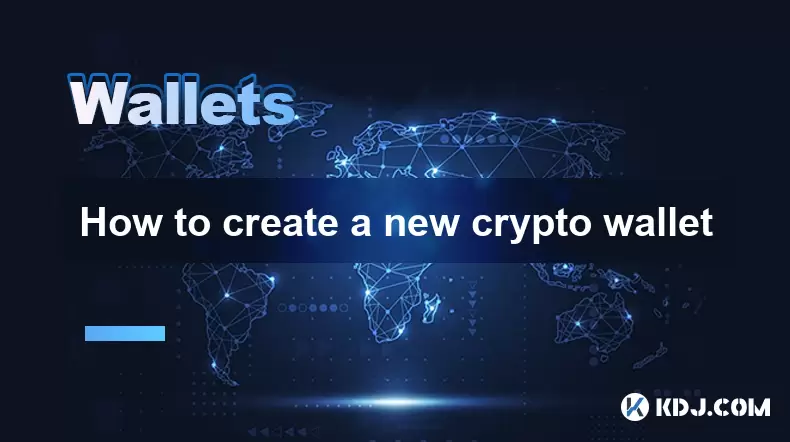
How to create a new crypto wallet
Aug 07,2025 at 09:22pm
Understanding the Basics of a Cryptocurrency WalletA cryptocurrency wallet is a digital tool that allows users to store, send, and receive digital ass...
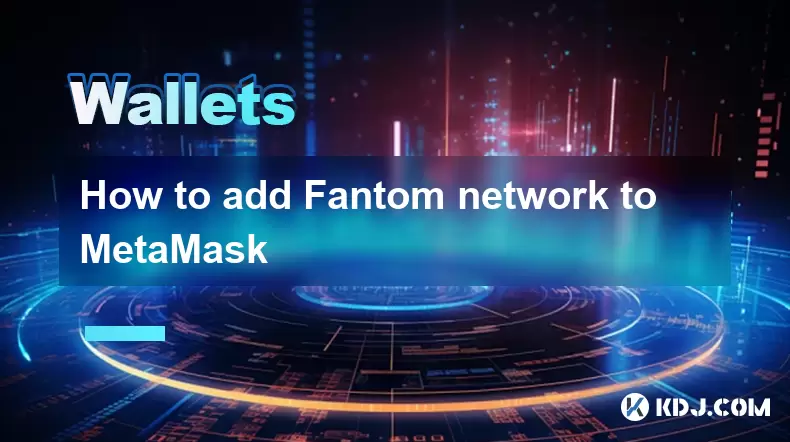
How to add Fantom network to MetaMask
Aug 07,2025 at 08:21am
Understanding the Fantom Network and MetaMask IntegrationThe Fantom network is a high-performance, scalable, and secure blockchain platform designed f...

How to update the firmware on your Trezor wallet
Aug 07,2025 at 05:00pm
Understanding the Role of Staking in Cryptocurrency EcosystemsStaking has become a fundamental component of many blockchain networks that operate unde...
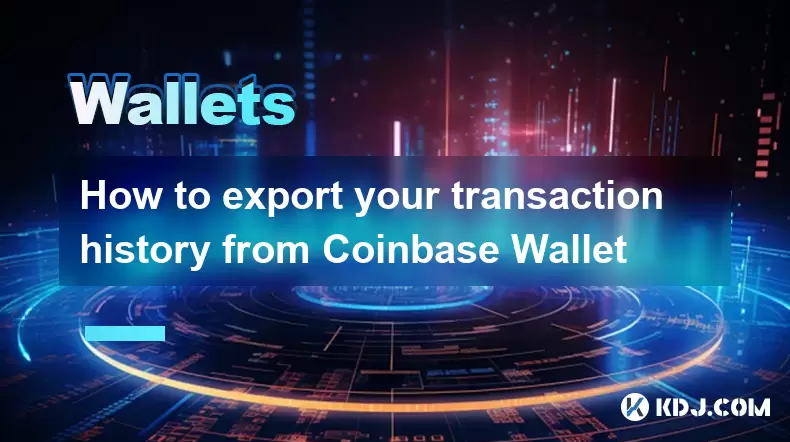
How to export your transaction history from Coinbase Wallet
Aug 07,2025 at 06:50am
Understanding Coinbase Wallet and Transaction HistoryCoinbase Wallet is a self-custodial cryptocurrency wallet that allows users to store, manage, and...
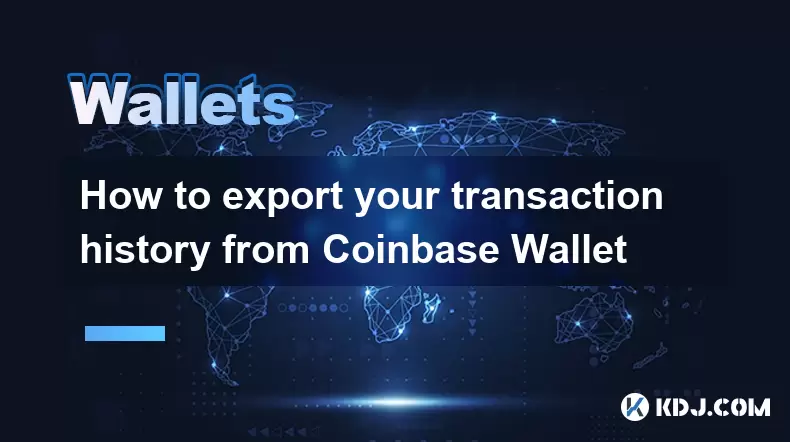
How to export your transaction history from Coinbase Wallet
Aug 07,2025 at 08:49am
Understanding Coinbase Wallet and Transaction HistoryCoinbase Wallet is a self-custodial cryptocurrency wallet that allows users to store, manage, and...

How to buy Dogecoin on MetaMask
Aug 08,2025 at 03:42am
Understanding Dogecoin and MetaMask CompatibilityDogecoin (DOGE) is a popular meme-based cryptocurrency that operates on its own blockchain, originall...

How to create a new crypto wallet
Aug 07,2025 at 09:22pm
Understanding the Basics of a Cryptocurrency WalletA cryptocurrency wallet is a digital tool that allows users to store, send, and receive digital ass...

How to add Fantom network to MetaMask
Aug 07,2025 at 08:21am
Understanding the Fantom Network and MetaMask IntegrationThe Fantom network is a high-performance, scalable, and secure blockchain platform designed f...

How to update the firmware on your Trezor wallet
Aug 07,2025 at 05:00pm
Understanding the Role of Staking in Cryptocurrency EcosystemsStaking has become a fundamental component of many blockchain networks that operate unde...

How to export your transaction history from Coinbase Wallet
Aug 07,2025 at 06:50am
Understanding Coinbase Wallet and Transaction HistoryCoinbase Wallet is a self-custodial cryptocurrency wallet that allows users to store, manage, and...

How to export your transaction history from Coinbase Wallet
Aug 07,2025 at 08:49am
Understanding Coinbase Wallet and Transaction HistoryCoinbase Wallet is a self-custodial cryptocurrency wallet that allows users to store, manage, and...
See all articles

























































































